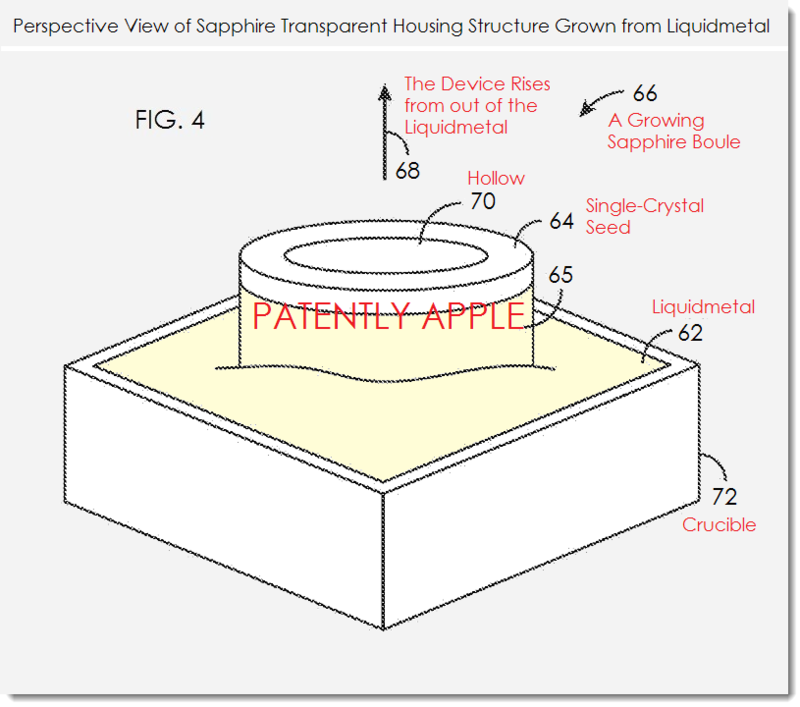Apple has continued filing patents that enable flexible displays, but this time with a twist of sapphire. The U.S. consumer electronics giant has added to its range of patents a “killer invention” that enables flexible wraparound displays in potential future iPhone and other devices, according to a recent report by Apple Patently.
 |
|
Apple's flexible display layer patent. (Photo Courtesy of Patently Apple) |
The patent filed by Apple in Europe describes sapphire and transparent displays used in a form factor created by an alumina powder liquid-metal process, a technology probably developed by Liquidmetal Technologies. Apple did not clarify the brand behind the technology in its patent application.
The patent is described to be ideal as a wraparound display for future wristband computers and has been chosen by Apple Patently as “one of the best of the year.” The patent enables a hollow display cover structure that may be cylindrical in shape, a hollow tube with an oval, triangular or rectangular cross-sectional shape.
Sapphire and other crystalline materials, or other transparent materials can be used to form the hollow display cover. End caps can be attached to opposing ends of the hollow display cover structure. The display cover structure is flexible and has a longitudal axis. The display layer can be OLED or other flexible display structure wrapped around the longitudinal axis to cover the interior surface of the hollow display cover structure, which may have overlapping edges, without overlapping, or protruding edges through an opening in a support structure.
The sapphires grown to cover the display are grown from Molten Material (Liquidmetal). The transparent housing structures grown from the material are pulled by a seed crystal vertically upwards. The sapphire can be grown from single crystals by pulling a boule of sapphire from a melt. This arrangement is then filled with alumina powder to raise the temperature enough to form molten liquid.
 |
|
Apple's transparent housing structure grown from Liquidmetal. (Photo Courtesy of Patently Apple) |
According to Apple, the single-crystal seed 64 may then be pulled upwards in direction 68. As the seed crystal moves upwards, the material in the melt cools and crystallizes, forming a growing sapphire boule such as boule 66. The Boule may form display cover structures for the display. The shape of the seed crystal used to grow the sapphire structure can influence the shape. If the seed crystal has an opening, the resulting sapphire structure might be hollow. For further details please click here for full report.













